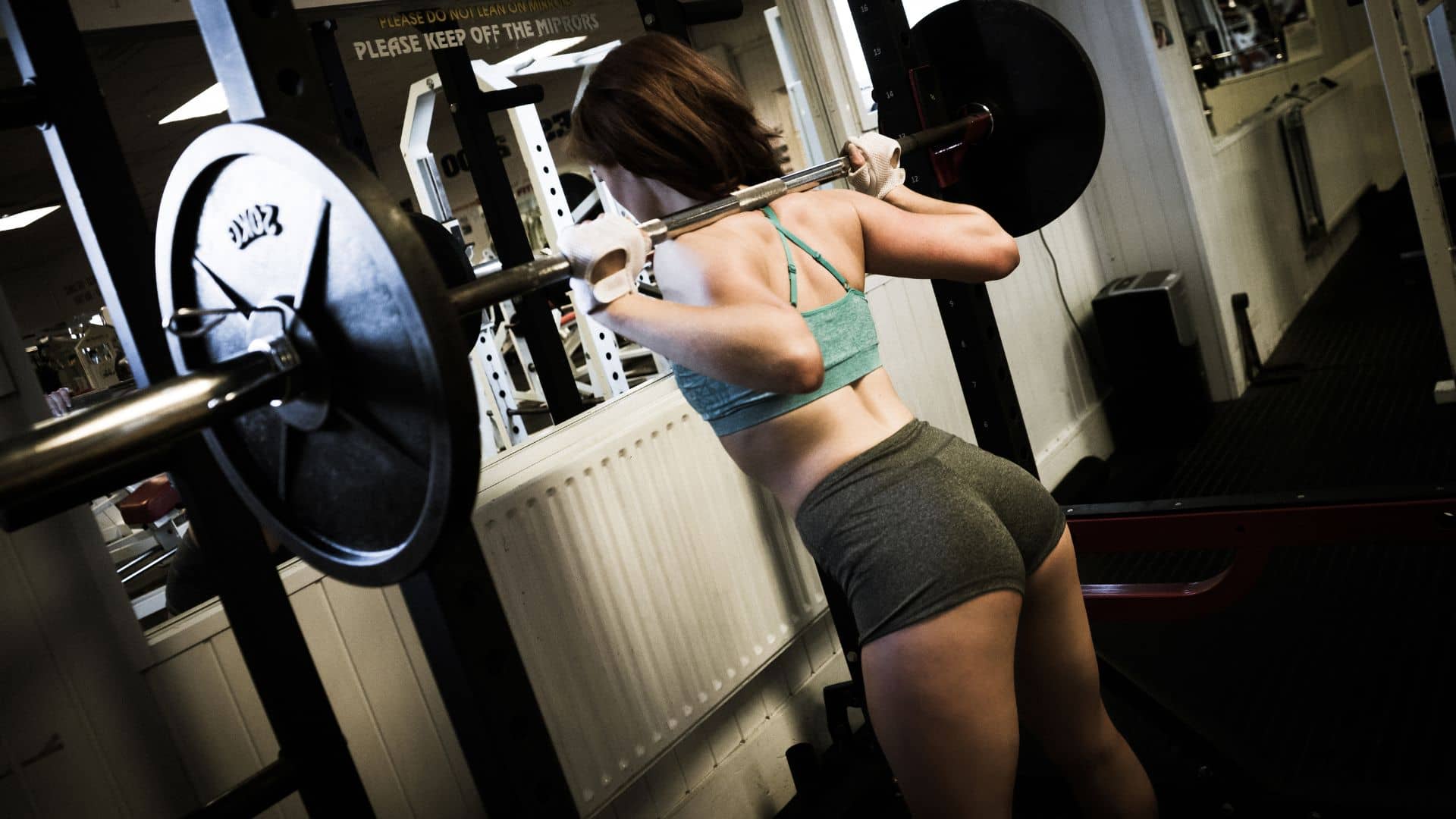Picture this: you’re at the gym, geared up for a solid squat session. You’ve got your workout playlist ready, your form is on point, but there’s one thing on your mind should you try to sneak out that impending gas before hitting the squat rack? It’s a question that’s crossed the minds of many fitness enthusiasts, and today, we’re diving deep into this gas-related gym dilemma.
Whether you’re a seasoned gym-goer or just starting your fitness journey, join us as we explore the do’s and don’ts of dealing with this natural, albeit sometimes awkward, bodily function in the quest for a great workout.
Is it a good idea to release gas before starting your squat exercise at the gym?
No, not necessary, since it’s a natural bodily function from time to time, and gym-goers are usually understanding.
Engaging in physical exercise, such as squats, can sometimes put pressure on your digestive system and lead to unexpected gas release.
While it’s a natural bodily function and nothing to be ashamed of, it’s understandable that you may want to minimize the chances of it happening in a public setting like a gym.
Here are a few tips to consider:
Timing: If you’re concerned about passing gas during your workout, you might want to schedule your gym sessions for times when your digestive system is less active.
Many people find that it’s less likely to happen in the morning after waking up or later in the day, as opposed to right after a meal.
Diet: Pay attention to what you eat before your workout. Foods that are known to cause gas, like beans, broccoli, cabbage, and carbonated beverages, should be avoided or consumed in moderation before exercise.
Pre-workout preparation: If you’re still worried about gas, you can try to relieve any built-up pressure by visiting the restroom before starting your workout.
A quick trip to the bathroom might help you feel more comfortable during your gym session.
Warm-up: Prior to engaging in more strenuous exercises like squats, it’s important to warm up your body.
Gentle movements and stretches can help your muscles relax and potentially alleviate any gas discomfort.
Mindful breathing: During your workout, focus on your breathing. Proper breathing techniques can help reduce abdominal pressure and may minimize the chances of gas escaping unintentionally.
Ultimately, it’s important to remember that everyone experiences these natural bodily functions from time to time, and gym-goers are usually understanding. If it happens, try to maintain your composure and continue with your workout.
Most people will understand that it’s a normal part of being human, and it’s likely not something they’ll dwell on.

Further Explanations.
Let’s dive deeper and elaborate further on all the points mentioned.
Firstly, let’s delve deeper into the timing and dietary considerations to help you better understand how they can impact the likelihood of passing gas during a workout:
Timing:
Morning Workouts: Many people find that their digestive system is relatively calm in the morning, as they haven’t eaten for several hours while sleeping.
This makes it less likely for gas to build up during a morning workout. However, you should still allow some time after waking up before exercising to let your body fully wake up and adjust.
Later in the Day: As the day progresses, your digestive system becomes more active as you consume meals and snacks.
This means that gas may be more likely to build up if you exercise later in the day, especially if you’ve had a meal relatively close to your workout time. If you choose to exercise in the afternoon or evening, consider allowing at least 1-2 hours after a meal before starting your workout to reduce the risk of gas discomfort.
Diet:
Gas-Producing Foods: Certain foods are known to produce gas in the digestive system. These include beans, broccoli, cabbage, onions, carbonated beverages, and high-fiber foods.
The gas is typically a result of the fermentation of undigested carbohydrates by gut bacteria. If you consume these foods before your workout, there’s a higher chance of experiencing gas during exercise.
Moderation: You don’t necessarily need to completely avoid gas-producing foods, as many of them are nutritious and provide important nutrients.
Instead, consider moderating your intake of these foods before a workout. For example, if you enjoy beans or cruciferous vegetables, you might want to have smaller portions or save them for a meal further away from your exercise session.
Hydration: Staying properly hydrated is important for overall health and exercise performance. However, if you consume a lot of water or carbonated beverages shortly before your workout, it can lead to bloating and gas.
To avoid this, try to hydrate consistently throughout the day rather than chugging large amounts of liquid right before your gym session.
In essence, the timing of your workout and your dietary choices can significantly influence the likelihood of experiencing gas during exercise.
By being mindful of when you exercise in relation to your meals and by choosing foods that are less likely to cause gas, you can reduce the chances of discomfort during your gym sessions.
let’s delve further into the pre-workout preparation, warm-up, and mindful breathing techniques to help you understand how they can help reduce the likelihood of experiencing gas discomfort during your gym session:
Pre-workout Preparation:
Before you start your workout, consider visiting the restroom as part of your pre-exercise routine. This can serve several purposes:
Gas Release: Going to the restroom can help release any built-up gas in your digestive system. It’s a natural way to relieve pressure, which might otherwise lead to gas discomfort during your workout.
Comfort: By ensuring your bladder and bowels are empty before exercising, you can feel more comfortable and focused during your workout. You won’t have the distraction or worry of needing to use the restroom while exercising.
Warm-up:
A warm-up is an essential part of any exercise routine. It involves performing light to moderate-intensity activities before engaging in more strenuous exercises like squats. Here’s how it can help:
Muscle Preparation: Warming up gradually increases your heart rate and blood flow to your muscles. This helps prepare your muscles for the more intense work they’ll do during your workout, reducing the risk of strains or discomfort.
Gas Relief: Gentle movements and stretches performed during a warm-up can help alleviate any gas discomfort you might be experiencing. These movements can encourage gas to move through your digestive system more smoothly.
Mindful Breathing:
During your workout, pay attention to your breathing technique. Proper breathing can aid in reducing abdominal pressure and minimize the chances of unintentional gas release:
Diaphragmatic Breathing: Focus on deep diaphragmatic breathing, which involves inhaling deeply through your nose, allowing your abdomen to rise, and exhaling fully through your mouth. This type of breathing can help relax your abdominal muscles and reduce pressure in your gut.
Controlled Exhalations: When performing exercises like squats, exhale as you lift or exert force. This controlled exhalation can help stabilize your core and reduce the risk of gas escaping.
Mind-Body Connection: By being mindful of your breath, you can maintain better control over your core muscles, which can help prevent gas from escaping unintentionally.
In summary, pre-workout restroom visits, a proper warm-up, and mindful breathing techniques can all contribute to a more comfortable and gas-free gym experience.
These practices not only reduce the chances of gas-related discomfort but also enhance your overall workout performance and safety.
A complete tabular on this topic here.
Here’s a complete table summarizing the considerations and strategies you can use to manage gas-related concerns before engaging in squat exercises at the gym:
| Consideration | Explanation and Strategy |
|---|---|
| Timing | Schedule gym sessions for times when your digestive system is less active, such as in the morning or later in the day after meals have had time to digest. |
| Diet | Avoid or consume in moderation gas-producing foods like beans, broccoli, cabbage, onions, and carbonated beverages before your workout. Opt for easily digestible, low-fiber foods. |
| Pre-workout Preparation | Visit the restroom before starting your workout to release any built-up gas and ensure you feel more comfortable during your gym session. |
| Warm-up | Prior to squat exercises, perform a proper warm-up with gentle movements and stretches to prepare your muscles and alleviate gas discomfort. |
| Mindful Breathing | Focus on diaphragmatic breathing during your workout to reduce abdominal pressure and minimize the chances of unintentional gas release. Exhale as you lift during squats. |
| Acceptance and Normalization | Remember that gas is a natural bodily function, and gym-goers are usually understanding. If it happens, maintain composure, and continue your workout with confidence. |
By considering these factors and implementing the suggested strategies, you can minimize the likelihood of experiencing gas-related discomfort during your squat exercises at the gym, helping you have a more comfortable and productive workout.
Conclusion.
In conclusion, managing gas-related concerns while engaging in squat exercises at the gym involves a combination of timing, dietary choices, pre-workout preparations, warm-up routines, and mindful breathing techniques.
By following these strategies and embracing the understanding that gas is a natural bodily function, you can ensure a more comfortable and confident gym experience.
Remember, it’s about optimizing your workout while minimizing any potential discomfort, allowing you to focus on your fitness goals.

Hey there, it’s Mike Rrsq, the Editor-in-Chief over at Jsquat.com, and I’m absolutely obsessed with all things squat fitness! I’ve been lucky enough to get some serious recognition for my work in this field. With a solid background in the fitness and wellness industry, I’ve been there right from the get-go, helping shape this website into what it is today.
You see, I’m not just the boss around here; I’m also a passionate contributor. I love sharing my insights through my articles, and trust me, they’re not your run-of-the-mill stuff. Each piece I write is a labor of love, filled with my expertise and real-world experience in the fitness universe. So, if you’re into fitness and looking for some inspiration, you’re in the right place!


